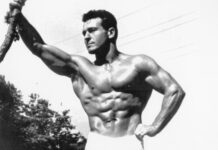
Over the past 30 years, being sedentary has become the norm. Some experts will go as far as to say today’s kids are the most inactive generation in history. And that’s bad news. When humans stop moving, things usually go wrong.
This pattern of physical inactivity is linked to the development of chronic diseases like heart disease, stroke, cancer and diabetes. And it’s not only our physical health that requires movement. For young children, being active is essential to brain development. This shift to a sedentary childhood has taken a lot of parents by surprise because when we were young, our parents didn’t have to think about physical activity in the same way.
Kids are born with the instinctive need to play. The difference between this generation and previous ones is the nature of the games. Kids today are playing as much as they always did, but now digital screens have become their playground.
When I was young, my mom told me to go outside. And there I developed motor skills and the habit and love of being active when I played baseball, kick the can, or in the sandpit at the park. When today’s kids play, they learn to handle a joystick, a keyboard and smartphone. Smartphones and screens are one part of perfect storm of factors leading to an environment of inactivity.
Safety concerns mean that parents drive kids everywhere. Parents are balancing more and may not have much time to spend playing with their kids. And kids and parents alike have busier schedules driving from one commitment to the next.
This rise of inactivity in children is why we hear more experts talking about the importance of physical literacy. This refers to when a person has developed the ability to move well, with confidence and they enjoy moving. Kids develop physical literacy when we help them develop fundamental skills like running, jumping, throwing and catching and we make moving fun.
Developing physical literacy at a young age is thought to be a key factor in staying active throughout life. Active kids are healthier and happier. They have higher self-esteem; higher test scores and higher annual earnings through life. They are at reduced risk for heart disease, stroke, cancer and diabetes. They are less likely to experiment with drugs and alcohol.
If you are like many parents today, your reaction might be to question the need to develop something that seems so innate. But in this world where children are sedentary, over-scheduled and less likely to play outside, developing physical literacy is essential.
Developing Physical Literacy
Here are some steps all parents can take to help our kids learn to love moving:
Technology is here to stay. But kids are born with the capacity to move, so let’s help them develop the skills, the confidence and the enjoyment of being active.
Make sure your kids are exposed to a variety of games and activities, both structured and unstructured play appropriate to their age.
Children who are physically competent are also better off cognitively, emotionally and socially. Learning to be comfortable in your body is essential for an athlete, but also a rocket scientist, a budding writer or kids with disabilities.
Before signing your kids up for programs, ask questions about how much kids are moving throughout the day and find out if physical literacy is a priority.
If kids are to move more, the entire village has to step up. Governments have to make physical literacy a priority and schools have to increase physical education, not cut it. These institutions will change their ways if we — the parents — speak up.















